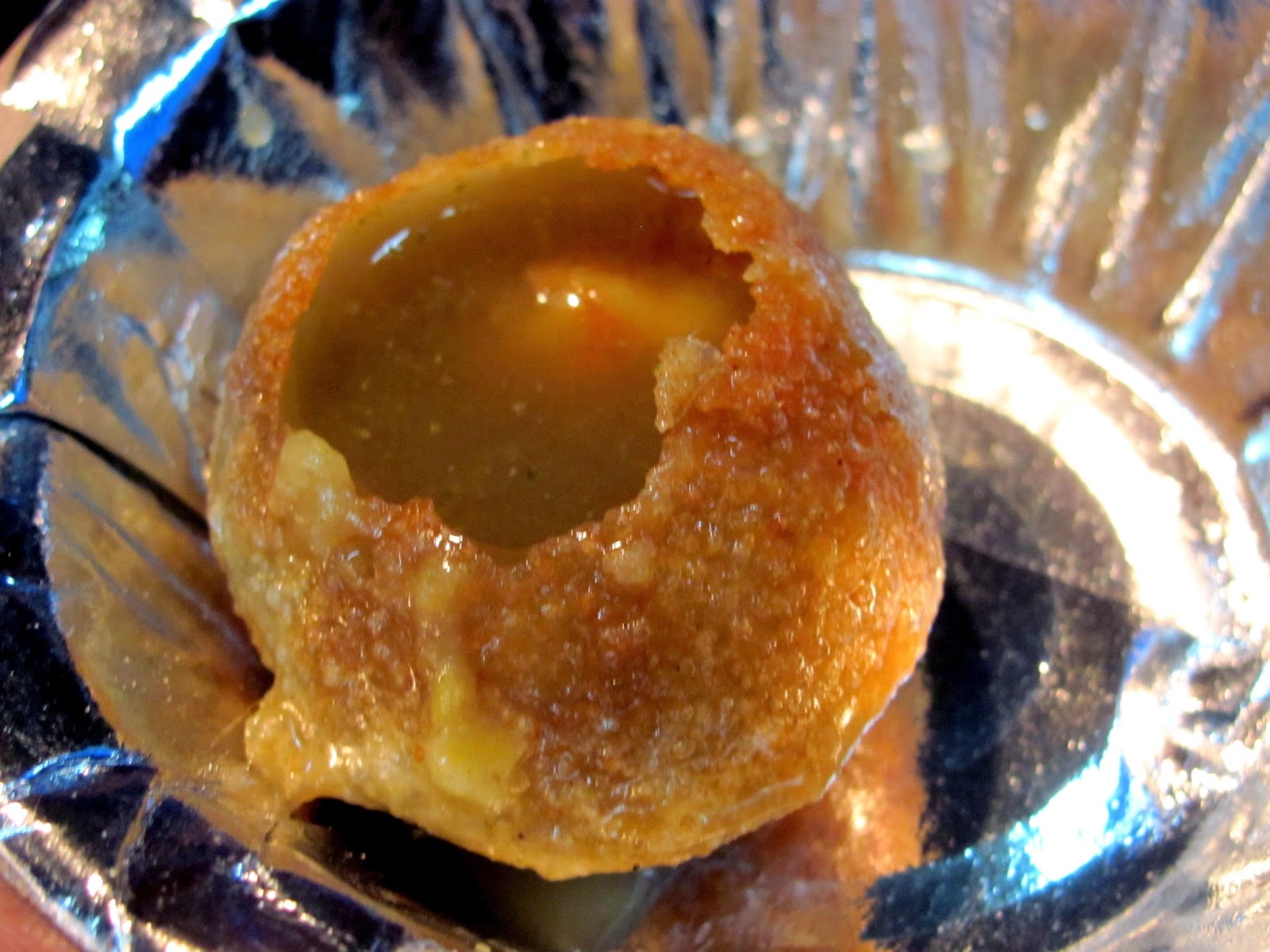When I heard about
tamatar chaat I assumed it to be sliced tomatoes topped with
sev and bhel with a squeeze of lime and dash of chaat masala. It is
what is called 'tomato slice' by some chaat vendors down south. I was
very wrong. Tamatar chaat in Allahabad (it is probably endemic
to Uttar Pradesh, I have not seen it easily available in Delhi or
Bombay) is on a different plane.
Santosh Chaat
Corner is a mobile chaat station. He does phulkis, tikkis and the
usual set of dishes. The main attraction though is the tamatar
chaat. The first time I had it packed in a silver foil tray. I was
intrigued by what looked like variation of bhaji in pav-bhaji. I scooped up a bit with the spoon, and examined it closely trying
to identify what goes into making this, but the fragrance and visual
appeal made me abandon my pursuit and focus on eating it. It was a
celebration in my mouth. Perfect temperature, soft buttery texture
and that twang only the yummiest of chaat can give.
This being an
entirely new chaat dish my curiosity didn't die down, and to quell
that the Mimani family helped me engage with the man behind the dish
– Mr. Santosh. With the able aid of Mr. Bunty the all-in-all
domestic help I went to meet the creator of a splendid dish.
 |
| Mr. Santosh |
Mr. Santosh was was
having a very busy evening and offered to pack me all the chaat i
wanted but if you want to see the making from scratch you need to
come early evening. That is exactly what I did the next day. Bunty
and I went to Santosh Chaat Corner, I was very excited at the
prospect of discovering the recipe and secretly hoped to replicate
the same in lands where none have had this yummy chaat!
 |
| Jeera and Onions |
The process starts
with cleaning the tawa. Its wiped clean of all residue from making
tikkis and fresh oil is poured. A handfull of jeera is
tossed into the oil and while it sizzles, a cup or two of chopped
onions is added. This is cooked until it turns brown.
 |
| Chaat Brothers - Santosh and Satish |
Then add roughly
chopped tomatoes. Satish (Santosh's brother) does the tomato chopping
and he is fast, he hacked through about five kilos of tomatoes in 10
minutes. Sauté all of it - let it sweat and cook on the tawa. Once
the tomatoes begin to soften, bring out the mashers! Squish and
squash them tomatoes. It'll transform into a red juicy pulp.
Half cooked tikkis
are then added to the beautiful crimson pulpy gravy. Then repeat mash
cycle. As it gets thick and unwieldy, the tangy pani of the
phulkis is added. Jal-jeera is a good substitute adds
Santosh. Mix and Mash away!
The next phase is
when all the flavouring ingredients are added. The spicy green chili
chutney, red chilli flakes, jeera powder, chaat masala, and a
lot of other masalas you will have no idea about! Top it up with some
chopped coriander. Add more of the pani to get the right
consistency, and continue mashing while it cooks.
Once you get a
thick creamy buttery texture and the mix begins to ever so slightly
stick to the tawa it is ready! Now there are two
variations. So this mix is transferred to a small bowl, while 70% of
the remaining mix is again treated with some sweet imli chutney, to
make a sweeter version of the chaat. So when people order, the dish
is tweaked according to demand.
If you are eating
on site, he scoops up a portion of the chaat onto a disposable bowl,
adds a seasoning of dahi, coriander, and crushed puris.
Ready to eat! This time it was fresh off the tawa, and I found
the chaat to be a bit too hot to be enjoyed. So keep this in mind,
tamatar chaat is best had packed, after a few minutes of cooling.
Now, do not let it cool too much, it becomes too thick and the dish loses its zesty life. That sweet spot of perfect temperature you
have to discover yourself!
 |
| Mr. Bunty |
Santosh and team
were kind enough to share the recipe, probably with the sheer
confidence that replicating this in any home is close to impossible.
That however should be no reason for you to not try! Go ahead and
experiment, create your own tamatar chaat, and if you succeed feed
the ones craving for it, and if you fail, pack your bags and head to
Allahabad.
 |
| Fresh tamatar chaat |






























